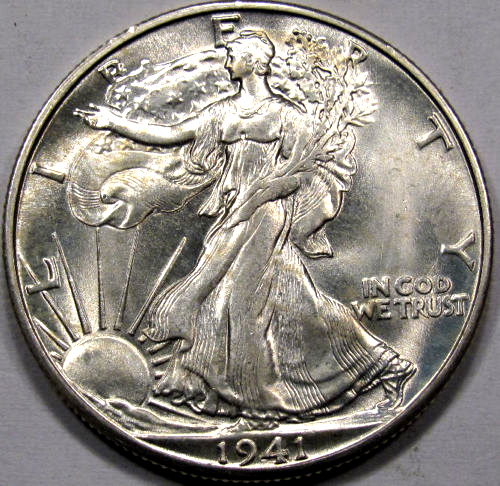
Most silver half dollars run from about $35 for something decent all the way down to crap coins at $8 bucks apiece, if you don’t mind the fact that the coin is unrecognizable and basically worth the silver scrap price and not a lot more.
Even cheaper is the half dollar you get from your local grocer or bank clerk. You’ll need a half dollar in order to learn the very first trick a performing magician learns, which is called “The French Drop”.
The French Drop is the Very First Trick You’ll Ever Learn, if you learn from a pro, and learning The French Drop requires a specific and very serious and very official Initiation into the Order of Performing Magicians.
I’ll give specifics in a moment, but first, let’s examine the concept of coin magic itself:
One of the most natural and easiest tricks for which to find a prop is a coin trick. Almost everyone has a coin of some kind or another. The most common coin for the French Drop is the U.S. Half Dollar, but there are plenty of other coins and plenty of good reasons to use an unusual coin.
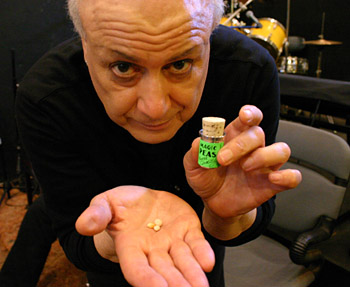
The singular reason for using a familiar coin is the apparency of innocence, meaning that the half-dollar doesn’t generally arouse suspicion, although in the hands of a magician, there is no reason for it to NOT arouse suspicion, because a half-dollar can be very gimmicked with anything from a hollow coin or a hinged-and-jointed coin, or a two-sided gimmicked coin, all the way to a magnetic coin that sticks to almost anything, with a lot of effects in between those two extremes.
Appearing Coins, Vanishing Coins and Transforming Coins are the mainstream of coin magic, although you will find, if you look not all that exhaustively, thousands upon thousands of coin tricks, just because “everybody has a coin” and chiefly because “everybody thinks an ordinary-looking coin is an ordinary coin”.
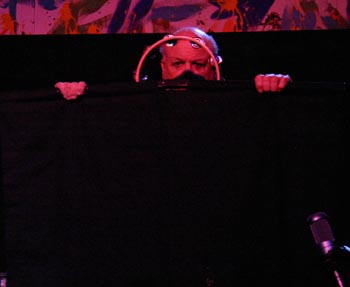
Both statements are clearly absurd, but they work well enough in the context of magical stagework and entertainment.
Oh, yes, never forget that magic is just another form of simple or complex entertainment, and that an entire evening of magic is as potent and difficult to stage and carry on night after night as any theatrical musical production.
In fact, many modern magicians are careful to incorporate lots of leg, tits and ass in their show, to keep the men amused, and lots of romantic implications and comedy to keep the women interested.
Magic has no gender, but you’d think it does, because you’d be hard-pressed to find any professional women magicians besides the dozen or so who achieved fame simply because they were somehow miraculously able to hold their own amongst a dominantly male environment.
This all comes down from a historical viewpoint as “The Bar Syndrome”, where you have half-naked, three-quarters naked, almost entirely naked and buck-ass naked youngish girls dance suggestively for hours and hours until just after dawn, in most clubs.
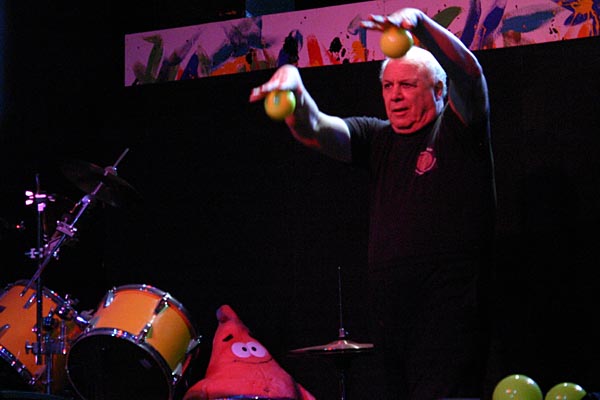
They can’t dance without breaks, so the management hires a comedian to entertain the unruly and moronically angry crowd, which throughout the comedy act howls for the girls to come back onstage, until the comedian runs off to avoid contact with hurled bottles and other unpleasant missiles, and the girls get back to their jobs.
Union rules demand a break, but the crowd will much more loudly demand entertainment every single moment that they are paying a bar bill.
It’s all about “More bang for your buck” and the Protestant Work Ethic.
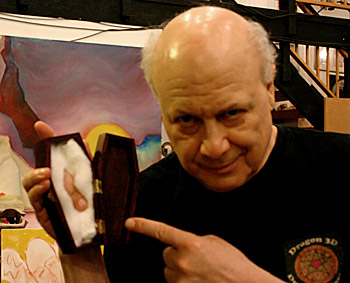
So I’m sitting here surrounded by thousands upon thousands of non-numismatic coins, mostly pennies, and wondering what to do with them… toss them back into circulation, or put them to work somehow, with comedy breaks in-between performances, of course.
What better way to use an unusual coin, such as a “Knights Templar From The Fortress of Sidon” coin, or a “Mark 12 Widow’s Mite”, otherwise known as the “Jesus Coin”!
If you put the coin out “raw”, the coin will degrade rather quickly, but the coins that I put out there in the raw will be relatively cheap, anywhere from $2 to $35 depending on the grade, condition and general appearance of the coin, meaning “details” as opposed to “grade”.

If you want to keep a coin in good condition, mount it in an acrylic Time Capsule, as I’ve done with hundreds of very unusual coins for this purpose.
Of course, that changes the handling size of the coin, but not the weight.
The idea is to put coins out as something other than numismatic collectibles. Coins have a lot of uses in crafting, jewelry-making and of course magic, and you can create hundreds of different coin trick routines for your magic act.
Coins are merely conveniently sized, shaped and weighted small objects, and small objects can be manipulated with sleight of hand moves, which makes great closeup magic, most of which is a variant of the French Drop, so pay attention right at the beginning, don’t wait for the good stuff to wake up, okay?

If you’ve never seen or performed the “Miser’s Dream” where you produce a bucketful of coins out of the air and then when you toss the contents of the bucket toward the audience, confetti flies out instead of coins.
You’ll find so many incredible coin tricks that you won’t believe it — there are literally thousands of very different coin tricks, many of which are easy to master and don’t require special handling or sleights skills, although many coin tricks do.
Knuckle-rolling is one place where you might start to improve your hand-skills.
I intend to stress the jewelry-making and closeup performance values of my coins that I display and offer for sale at the shop, rather than obsess — not my style anyway — over states & values.
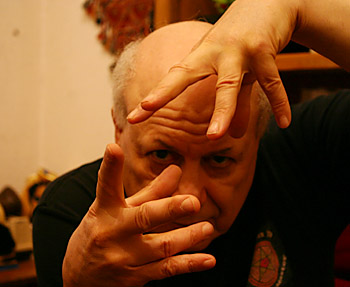
Seems to me that a good coin has “story value”, and that’s what I’m going for, good story value, meaning that the coin has an interesting history.
The more valuable the coin, the more important it be protected in my air tight acrylic capsules, with the coin-friendly interior ring. The coin is totally protected by the capsule, and remains numismatically unchanged through the years, because no additional oxidation is possible with the seal in place.
Also, magic coins protected in this way will keep or improve their value, because they are impervious to most harm when carried in the protective acrylic capsule, subject to some damage from dropped pianos or sudden meteoric impact, but “else fine”.

As for story value, I have coins from every culture, and where there are no coins to get, such as the Sumerian culture, I have shells and beads that served as money in those ancient civilizations.
I might still have a few ducks and chickens as well, but they’d be far too old to make a good stew, and as fryers they’ve long ago lost their appeal.
Coins, coins, coins. We all have had coins in our pockets or purses at one time or another, but what IS a coin?
It’s simply something that makes trade easier. You can carry your aforementioned ducks and chickens to market, but what if you want something that isn’t for trade for a duck or a chicken?
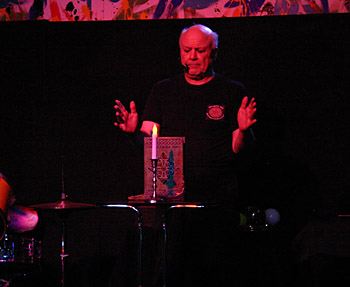
You have to find someone who wants a duck or a chicken and is willing to trade something YOU want for it, OR you have to find someone who wants a duck or a chicken and has something that the person who has what you want has.
That can get terribly complicated, when you’re in a civilization that has no money, no credit cards and no supermarkets, and they still exist today, thanks to human greed and stupidity.
There’s no reason for anyone to starve. There’s plenty of food, plenty of money, plenty of room and plenty of everything for everyone, but it’s all concentrated in the hands of about 650 families, amounting to a few thousand disgustingly rich people around the world.
It’s left to the rest of humanity to struggle and suffer to survive.
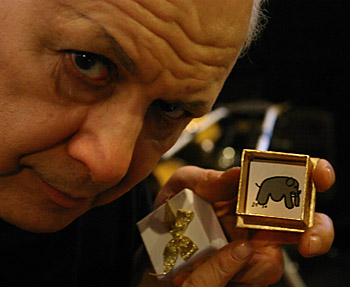
Sounds terrible, doesn’t it? But remember, the only solution to the worries of the world is chocolate, and when you can’t get chocolate, or you’ve just had some and it isn’t working and you need something stronger, try a little magic in your life.
In short, let’s look at some of the actual coinages you can use in your magic show or at your magic shop.
First of all, every trick comes with a free lesson on how to work it, but there’s a catch: you can’t teach a magic trick without the initiate taking the Sacred Order of Magicians Oath, which is, “I promise to never reveal the secret of any trick to anyone other than a fellow magician.”.
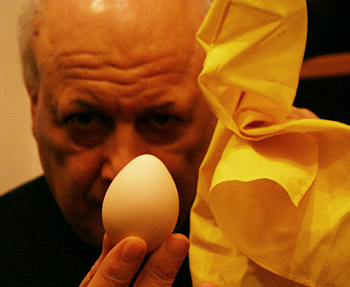
This oath actually OFFICIALLY makes you a magician, by agreement with all international magic entertainers, and enables a pro magician to teach you a trick you want to learn.
Remember that some people earn a living from those trade-secrets, and that they are just as personal and sacred as a family recipe, or manufacturing process, or the Colonel’s Secret Sauce, the secret of which is now very well known — MSG.
Knowing the secret spoils the trick, they say, but I disagree. You can watch Penn & Teller reveal a trick and then do it again in a totally different way, without using the revealed gimmicks.
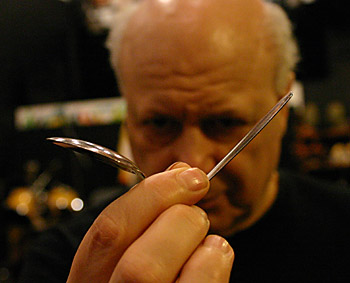
A trick properly used in an entertainment act serves to illustrate a point in a story — that’s its function, in total.
Keeping a secret is hard for most folks. They can’t wait to spill their guts to the nearest willing listener and sometimes unwilling as well.
Knowing that an Oath is sacred and serious is a whole new level of learning, and Oath-taking must be mastered in this lifetime, so why not start young?
I would never teach a trick without asking for that oath, unless I know the recipient to be a pro or amateur magician already operating under the limitations of the Magician’s Oath.
Okay, that having been said, check out this reasoning:
When you concentrate on the Magic Coin as THE FIRST TRICK of any kid first learning prestidigitation, which is “hand sleights” in fancy Latin language, you get them to take the Oath.
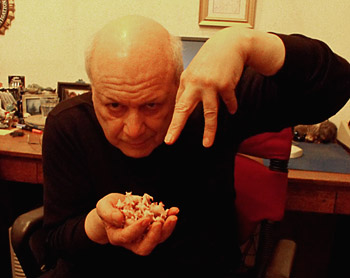
No Oath, no Reveal.
This Code of Magicians is real, it’s serious and it means something to all entertaining magicians.
When you administer this seemingly simple Magician’s Oath, it automatically increases the Body of the Order of Magicians, but it also is a genuine form of INITIATION, and may bring the child closer to his or her spiritual origins, opening the door for further inquiry and exploration.
In short, you might trigger some ancient past-lives memories, which is all to the good, but don’t worry about overwhelming someone with Objective Reality — unless the person is open to it, no such triggering event will take place.
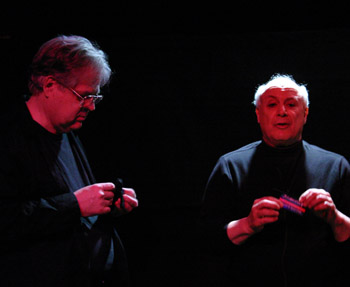
What determines which coin to get?
Two things will predetermine the selection: one, the weight of the coin, and two, how many different coins will you be using?
Every coin has a story, but you don’t want to crowd the storyline with lots and lots of complications, so make each story count by only using the coins that fit the story, which might just be one single coin.
I use three coins in one presentation, but it’s a combination of three different routines to produce a single comedy effect.
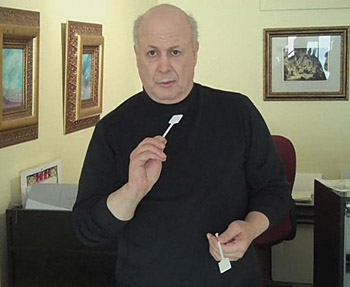
Of course, I price my tricks not on the basis of the gimmick or the cost of the parts, although that certainly does figure into it, but on the value of the trick and the scarcity of the performers doing that routine.
One coin I like especially well for coin magic is the U.S. “Walking Liberty” Half, which is a beautiful coin with a variable degree of value, meaning that you can pick one up for a few bucks, if you don’t mind that it’s worn down to an unrecognizable lump.
Most “Liberty Walkers” that you will want as a Magic Coin will be about EF-40, which means that you’ll pay about $50 bucks for a decent one that has clarity and just a hint of tone.
Toned Halves run about $35 on my Magic Coin shelf, but you can get a Walker at AU+ from me for just $100, MS-60 at $300, but these are “wowsers!”, which you don’t really need unless you’re wanting to perform before, and totally impress, a group of coin collectors.
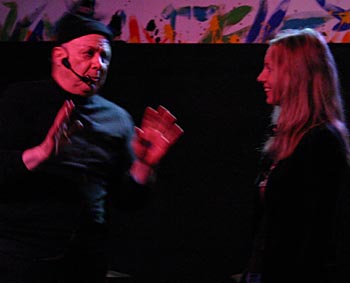
You’ll want the magic of the coin itself, which means a good date and good condition, and you’ll want, in the case of a collectible coin, to protect it in an acrylic capsule, but that brings the size of the resulting medallion to about the size of an American Silver Dollar.
That might not work for your hand or for the smaller hands of your younger customers, so what we can do is mount up a smaller coin in a capsule that ends up being the same size as a U.S. Half Dollar, and that can mean a LOT of different coins, anything from a Quarter to a Colonial Early American coin, which runs into serious money.
I also have “skulled out” coins, which have been engraved from U.S. out of circulation coins, mostly copper and silver, with a few gold coins carved in here and there.
I don’t recommend gold coins for a magic pass, because they’re just too damned heavy, even the smaller $2.50 gold coins that I occasionally make up for a customer.
Mostly it’s gonna be half dollars, which means “which date do you want”?

The Big 4 Tricks are:
- #1 — French Drop
- #2 — Chinese Linking Rings
- #3 — Change Bag
- #4 — Okito Coin Box
All of those four tricks are the required starter for any magic student of mine. You’ll need a half dollar to get started, so maybe it’s time to find out more about half dollars, which you’ve probably been largely ignoring and avoiding most of your adult life.
The modern half dollar is made of junk metal, and it’s a LOT lighter than the solid silver coins, so if you want the Perfect Weighted Coin, it’s gotta be the Walking Liberty Half.
The Kennedy Half is available in silver, but only in the year 1964, and it’s not cheap.
Kennedy halves are available in current circulation, although how much longer that’s going to go on, who knows, with the current madhouse operation in Washington, but we’ll be buying them as we need them to fulfill orders for The Classic Magic Coin, which is the Kennedy half in dates such as 2004, in Bright Uncirculated condition.
All my magic coins come with instruction. If I sell it online, I offer the same personal instruction in DVD format, with the option to call for more info if needed.
Let me give you a short list of the Magic Coins I’ll be offering in the shop, along with coins intended for use in jewelry, which are technically called “Jewelry-Grade Coins” when they have little or no numismatic value, but lots of eye-appeal and historical interest.
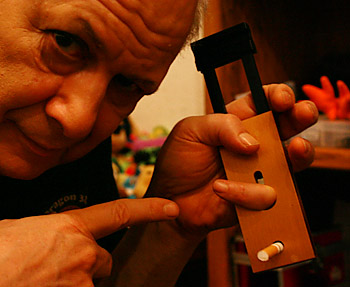
Will we also have numismatics in the shop???
Well, yes, but not nearly as many numismatics as magical coins, because the intent here is to put those coins to use, either in stage performance, personal practice or as PLS Time Tunnels.
Time Tunnel Coins are used as connectors, quantum entanglements, for past life surveys, and are unsurpassed for the purpose, along with beads, shells and objects of daily use.
Burial items that had no daily use are not generally good for PLS work, and I don’t have many burial pieces, even from 18th Dynasty Amarna — those came from the Palace and the ceramic workshop at the North end of the Palace, not from burial.
Even my “mummy cloth” was obtained from the Palace, not from a burial site, and was obtained by me at a legal public auction, from the Egypt Exploration Society, as part of the 1935-36 Pendlebury Expedition.
I have the excavation records for these pieces and in fact for the entire project, and am currently working to correlate the items with the photos and background information on their stratum correspondings.
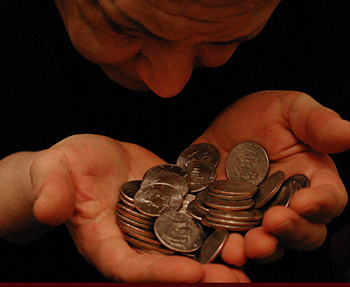
Large Heavy Coins — Mostly I’ll carry U.S. Silver Dollars as the heavy coin and, because they are very numismatic, I’ll protect them in an acrylic capsule, which makes them about the size of an American Silver Eagle, which is slightly larger than a dollar.
Other heavy coins that I might have on hand will be ancient Greek, Roman and Medieval coins, mostly in bronze, some in silver, such as the Athens Owl Coin, which requires a special capsule and is not always available.
Gold coins such as the Alexander III staters are sometimes available, with a waiting period of generally a few months until I can locate a real one — there are plenty of fakes on the market, along with the notorious Chinese fake $20 U.S. gold coins, of which there are now literally millions out there on the market, totally flooded.
If you don’t know your coins, stay away from gold, and particularly away from U.S. gold, and you can’t trust the silver anymore, either, unless you know your source.
There are millions of Chinese sourced fake slabbed silver coins out there, beware. They’re out for U.S. dollars, and have no compunction or sense of fairness and honesty, none whatever, and this stuff is made directly by the Chinese government.
In China, there are no private parties.
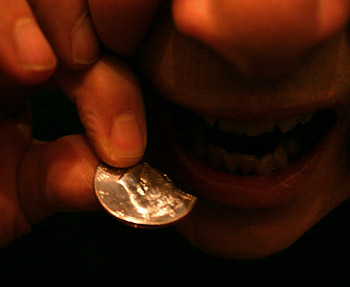
Medium-Weight Coins — What I have in mind for the smaller hand are some Medieval and Byzantine coins that might fit into the capsules.
Keep in mind that thick ancient coins are not round, not regular, and they’re not typically stamped in the center of the blank, so they can vary in size, shape and thickness quite a bit.
Lighter Coins — I can use a lighter coin for a smaller hand, but there’s a bottom limit to the lightness, or the coin won’t behave properly on a production, although for a vanish, almost anything will do.
If you’re using embossing metal to make your coin, you’ll want to glue or tape the embossed metal onto a heavy coin of the same size as the embossing disk, to give the encapsulated magic coin the proper weight.
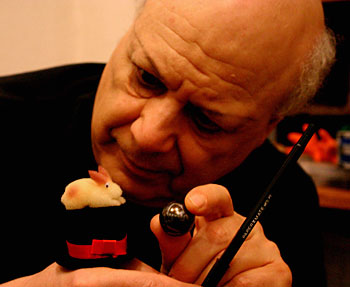
It’s really all about the weight and size of the magic coin, isn’t it?
You’ll have to play around with various coins and capsules until you find the exact right coin for you, and then if you teach, you’ll have to help each new magician find his or her own “right coin” for the coin manipulations and moves.
The coin tricks are the only sleight of hand you’ll ever have to learn, if you learn it right. Learn it wrong, or fail to master it, and no other sleight will work.
I think you’ll like my little magic shop, and especially the fact that I don’t have a lot of tricks in there — you get nowhere until you take the Oath, and learn the French Drop — nobody passes beyond that stage without initiation.
It always starts with something small.
Get something small. Buy a Magic Coin today! I have Magic Coins, Magic Beads, Magic Feathers, Magic Wands and Magic Rabbits, Hats, Gloves, Silks, Change Bags, Chinese Rings, Seance Cabinets and more — all kinds of magical items, many rare and unusual tricks, plus many tricks I’ve made myself for my own routines, such as “Fleetzy & Flootzy The Acrobatic Flies” routine, which I learned from Orson Wells back in 1949.

The original trick is long gone from the market, so I’ve found parts to make my own, and I sell them at $35 a pair, plus the lesson on DVD or in person, if you stop by the shop. I have entire routines and large-scale illusions for sale as well — you have only to ask.
My prices start at $2 and go all the way up, for the Houdini Strait Jacket & such, it can by sky-high & beyond.
See You At The Top!!!
gorby

